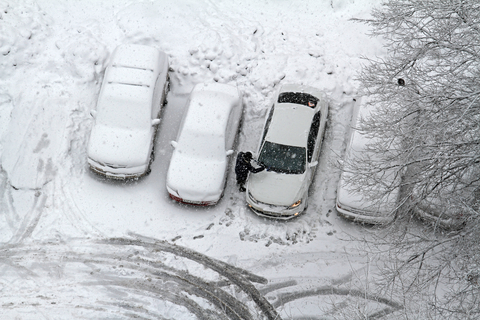Tips for travel as Icemageddon invades North America

Wet or icy roadways, a lack of preparation, and stress on your vehicle all increase the chances of a dangerous situation en route to holiday destinations.
So says Mark Cox, director of the Bridgestone Winter Driving School in Steamboat Springs, Colorado. The problem is particularly accute this year as ice storms blanketed North America, dubbed Icemageddon by residents of Texas.
There are many factors drivers need to consider before getting behind the wheel in unpredictable winter weather,” Cox said. “The longer and more remote your trip is, the more you should be prepared.”
Cox stressed the need for preparedness and awareness during winter travel, especially through unpredictable weather.
Here are some the six most important holiday driving tips according to Cox::
- Know Your Vehicle - An unfamiliar vehicle, like a rental or borrowed car, which increases the likelihood of an accident in reactive situations. Familiarize yourself with your transportation before beginning a trip. Too often, drivers use
- Assess Your Tires and Vital Systems - Before pulling out of your driveway, make sure your car is in good, working order. When it comes to seasonal road conditions, the more grip you have on the road, the better. In wet or icy conditions, more grip will mean more control.
- Look Ahead - Reading the roadway for signs of trouble can give you the extra few seconds you need to brake safely while avoiding a collision. Wet or slick greatly reduce stopping ability.
- Be Prepared In Case You Get Stuck - Get ready in case you are sidelined by an emergency. A roadside emergency kit is a must. What about other necessities to cope with getting stranding? Many people dress for their destinations instead of where they are traveling through. This can lead to a serious situation if a stranding occurs where immediate help is not available.
- Avoid multiple maneuvers. Drive to deliberately avoid quick, reactive driving. A car’s major systems are meant for acceleration, braking, and steering, but not all at once. Expecting a car to do more than one of these operations at a time can be dangerous on winter roads.
- Watch the Barometer Fall Check temperature on your driving route- Few people take into account the effect temperature has on the air pressure in their tires until the grip they rely on isn’t there. As a general rule, a 10 degree drop in temperature reduces tire pressure by one point.
“Loss of pressure can cause a dangerous situation in everyday driving, but on slick roadways it can be catastrophic,” Cox said.